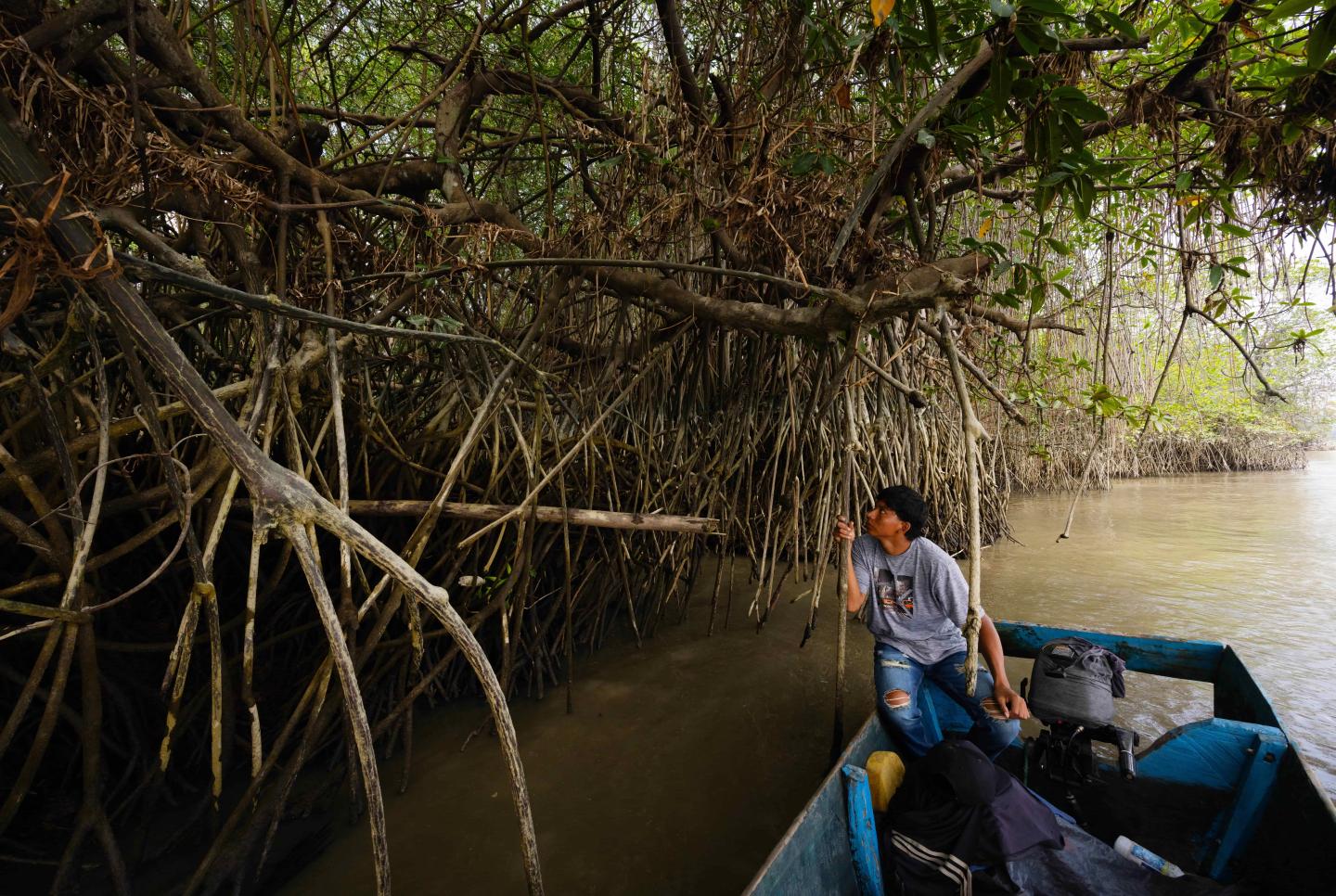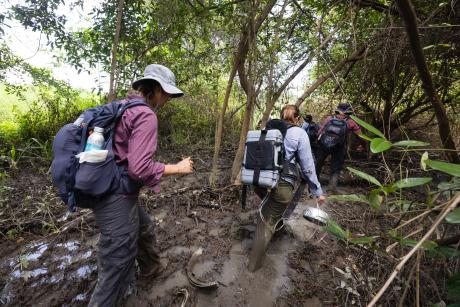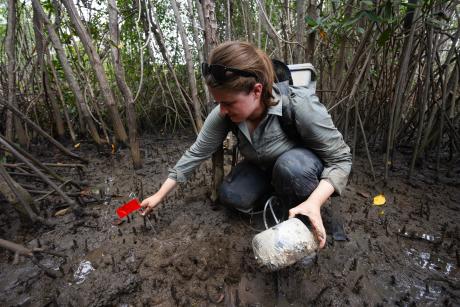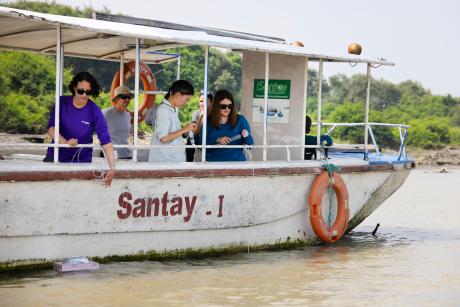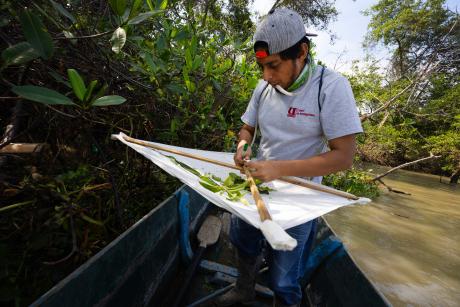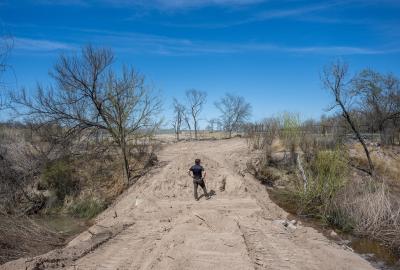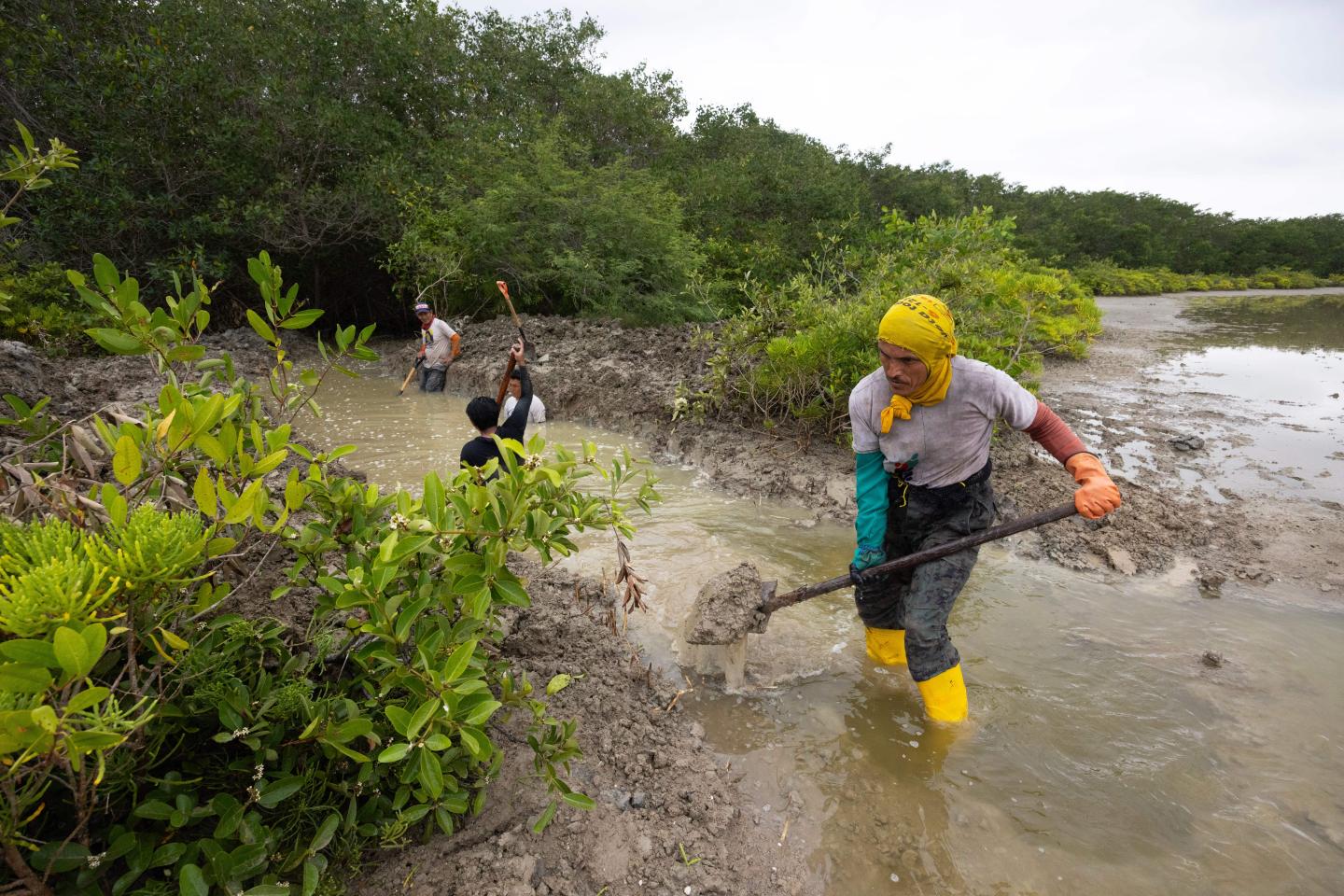
Ecuador's crabbers and the muddy work of saving mangroves
Photography by Leslie Von Pless
José Ordinola and Mauricio Cruz wade waist-deep into a small channel that flows from the Gulf of Guayaquil into the Arenillas Ecological Reserve mangrove swamp, a protected area on the southern Ecuadorian coast just a few miles north of the border with Peru.
The tide has receded enough to allow them to cross into the forest and harvest the day’s catch.
The crabbers, or cangrejeros, climb through the dense tangle of roots to locate small openings in the ground where red mangrove crabs rest in deep, muddy burrows.
On any given day, there could be 30 crabbers working the mangrove roots in this area. Besides simply relying on the mangrove’s abundant shellfish, they also manage and care for the trees.
“The mangrove for me is life,” says Cruz. “The mangrove protects the species from which we survive, not just us — but our families. That’s why we sustain it.”
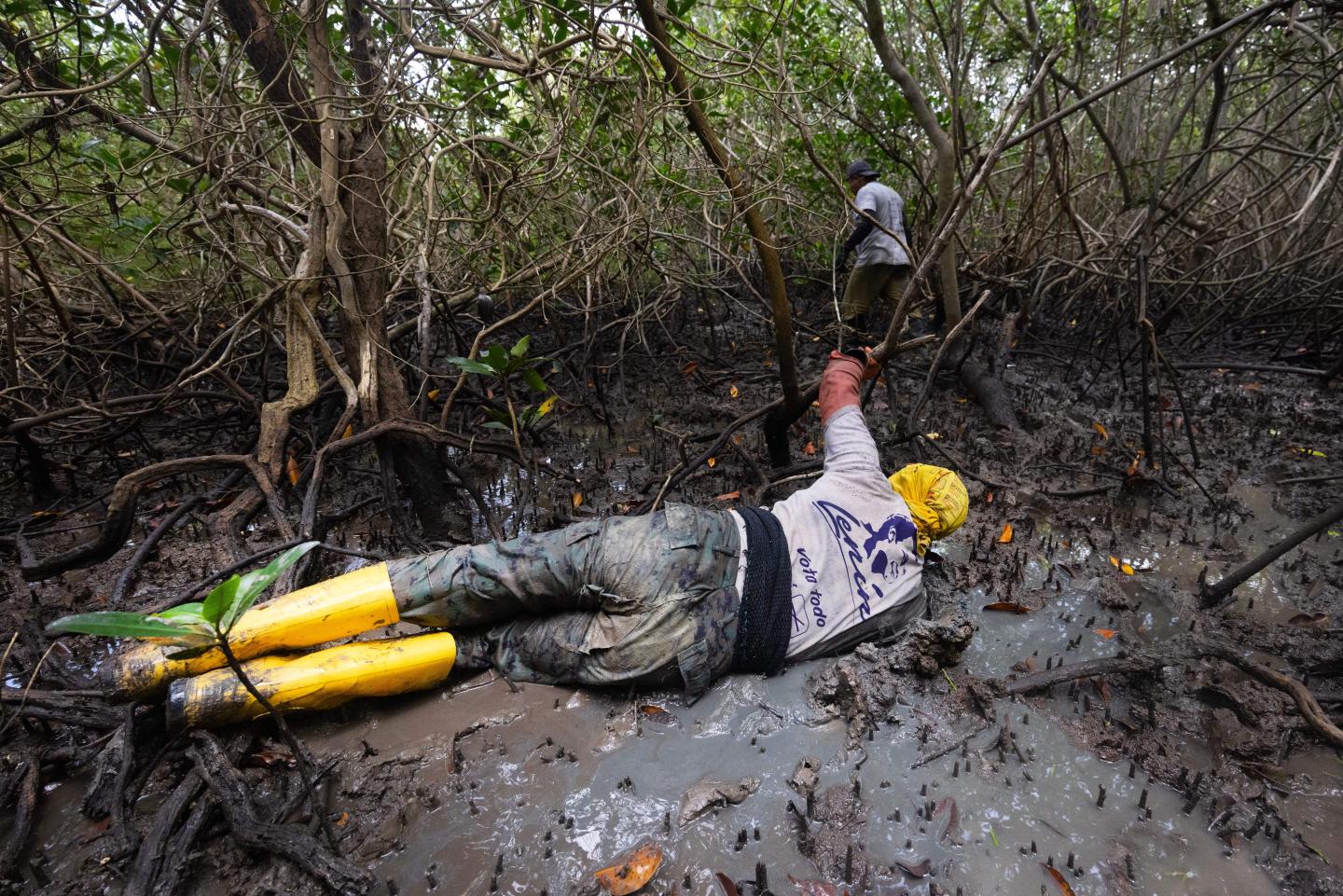
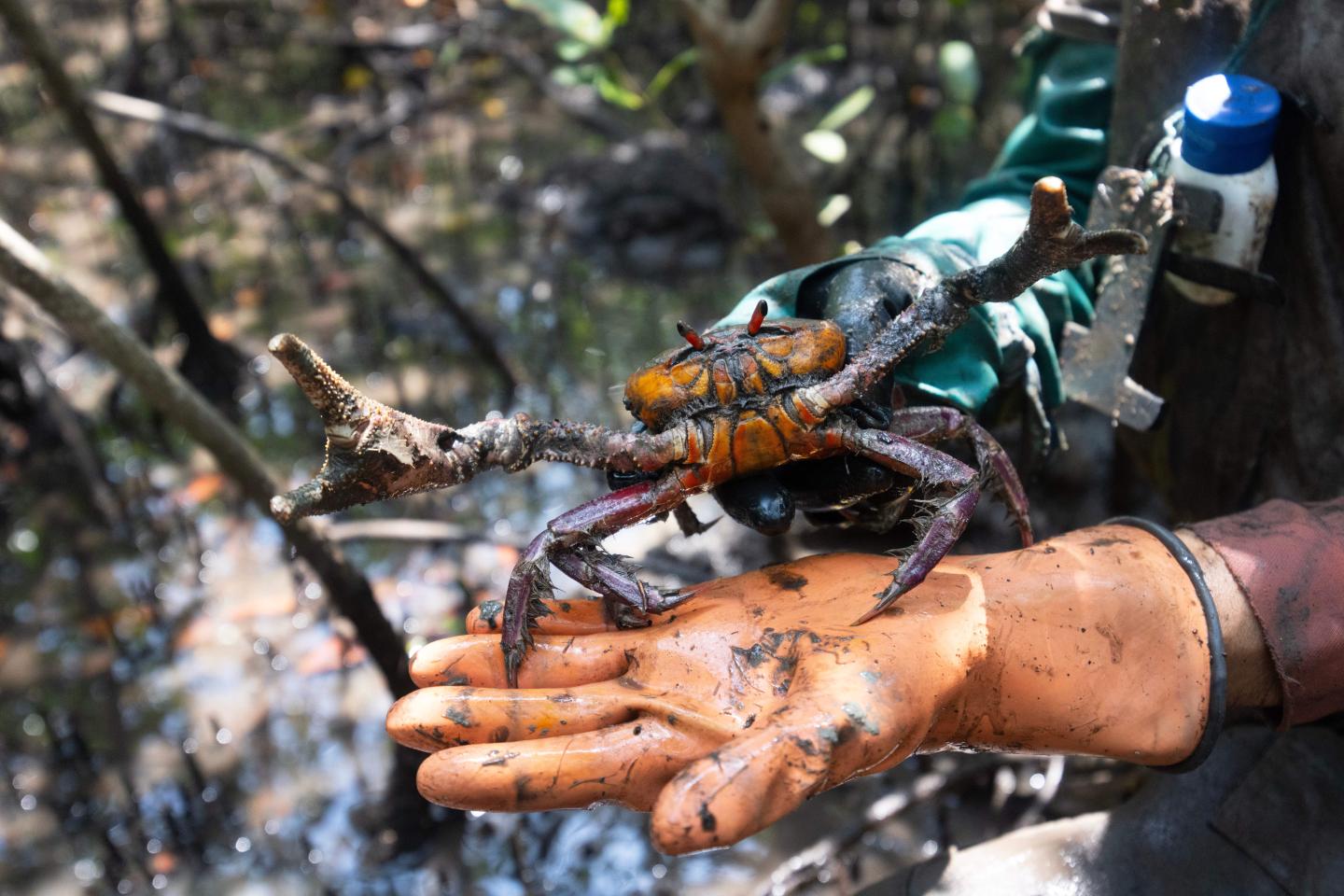
To dig out red crabs, crabbers like José Ordinola and Mauricio Cruz insert their entire arm, up to their shoulder, into deep mud.
Across the world, roughly 2 million kilometers (1.2 million miles) of coastline is covered with this fragile ecosystem of tropical wetland forests.
Most recognizable by their tentacle-like roots that stand high out of the water, mangroves are super-trees. They harbor vital food sources for local fishers, provide habitat for birds and wildlife and protect coastal communities from storm damage.
They can also sequester vast amounts of carbon and scientists are investigating their role in the fight against climate change.
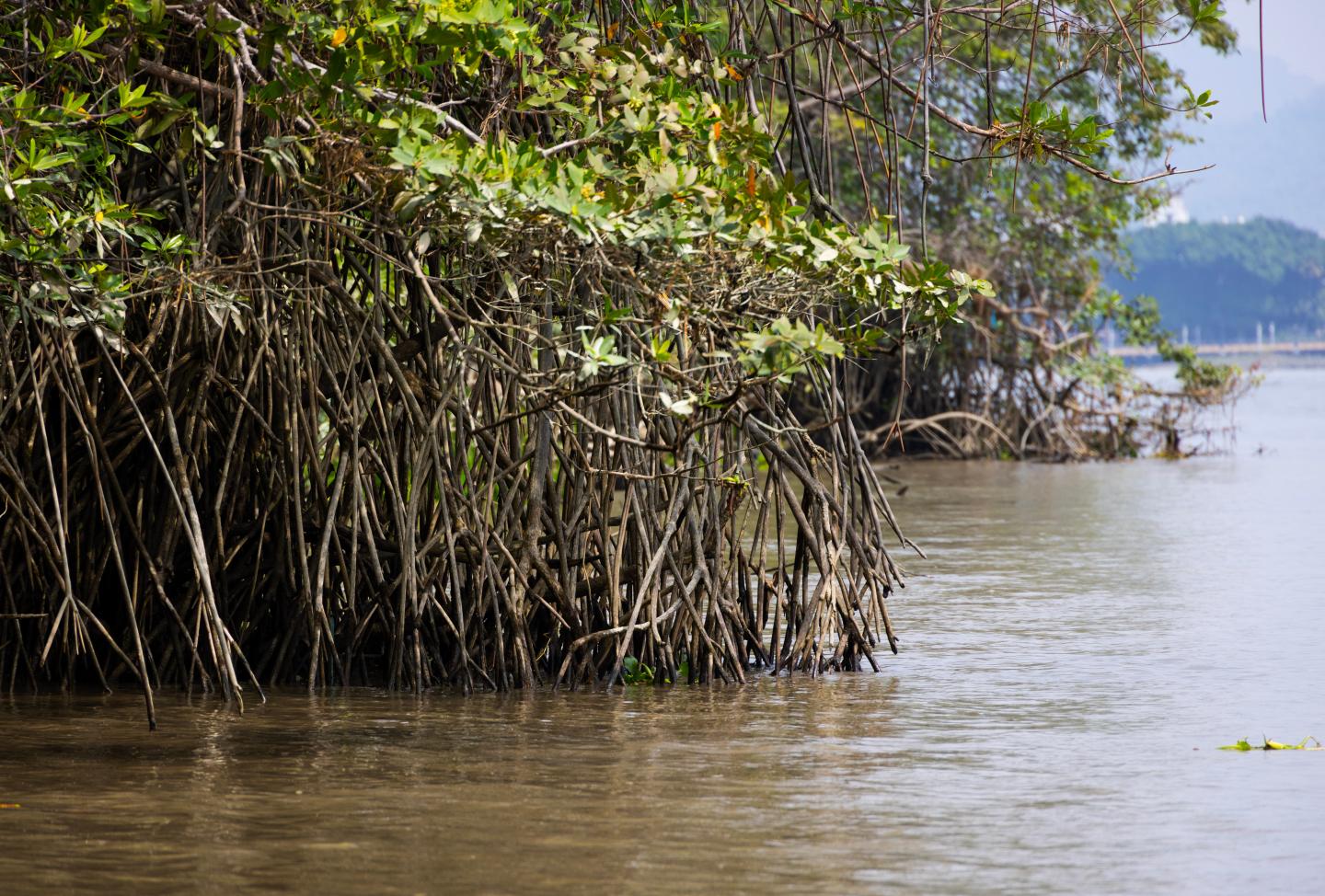
Around 35% of the world’s mangrove forests were lost between 1980 and 2000 due to coastal development, conversion to aquaculture, and other causes. Today that trajectory has slowed, and now just under half of remaining global mangroves are considered protected.
But they still face urgent threats. In Ecuador, home to the largest mangrove forests in the South Pacific, there have been drastic losses as forests are cleared to make way for the country’s prosperous shrimp farming industry. Pictured here, shrimp ponds encroach on the Arenillas Ecological Reserve.
With deforestation comes loss of habitat, food and livelihoods. And rather than providing critical climate benefits, mangrove loss can actually accelerate climate change.
“We know that mangroves store a lot of carbon in their soils,” says Monica Moritsch, a scientist at Environmental Defense Fund. “But we don't know how much greenhouse gases they release back into the atmosphere after they've been disturbed.”
Scientists are now studying these processes in an effort to better understand the impact of preservation and restoration.
A restoration process begins
One hundred and fifty kilometers (about 100 miles) up the coast, Alberto Dominguez slips a wooden paddle into the water and eases his boat off the shore of Isla Santay, into a dense channel of mangroves.
This section of the island, located in a channel in the Gulf of Guayaquil, marks the edge of the restoration area where the Santay community has begun planting mangrove trees.
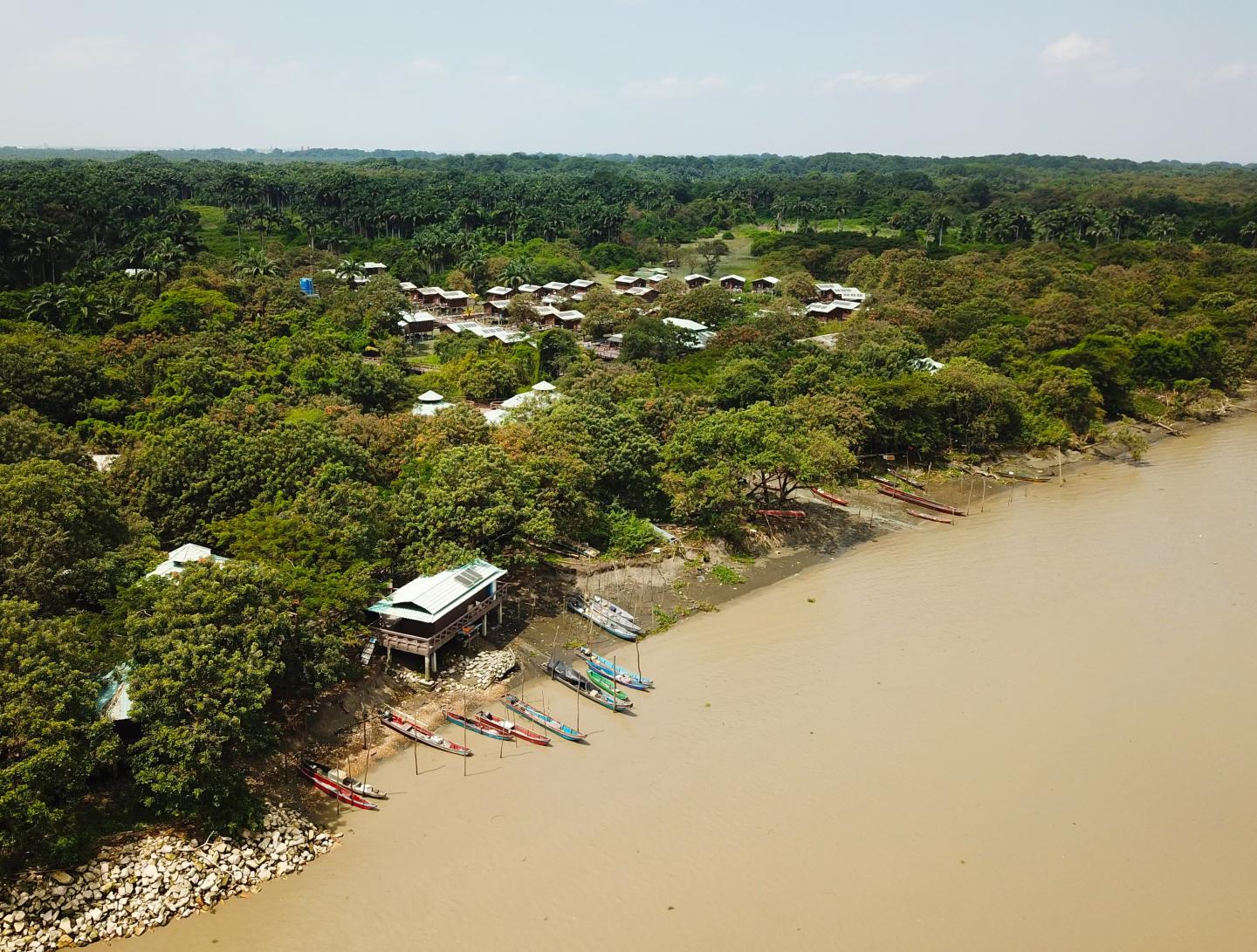
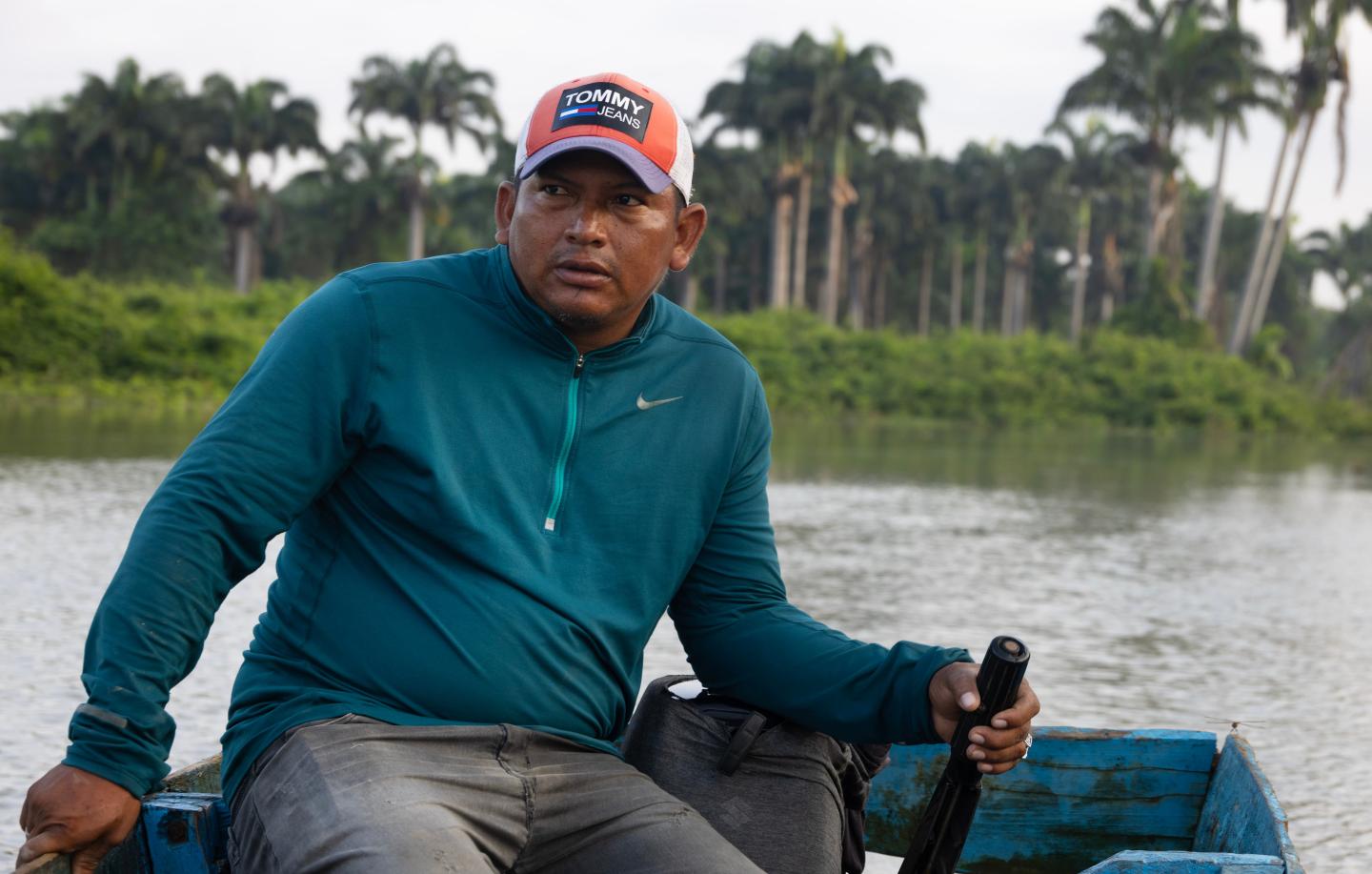
Alberto Dominguez navigates through a channel of mangroves in Isla Santay. The small community of artisanal fishers have lived on the island for generations.
Isla Santay is not only impacted by encroaching urban development just across the river, but aquaculture expansion has led to the destruction of significant portions of mangrove forests close to the island.
Artisanal fishers have inhabited Isla Santay for generations. The people there depend on the coastal ecosystem for fish, shellfish and more recently, eco-tourism. But the loss of mangroves has taken a toll.
“A few years ago we were able to have sustainable fishing for our families," says Dominguez, a local guide serving tourists, researchers and other visitors to the island. "Because the fishermen are running out of good mangrove space, they are no longer able to catch good crabs and fish.”
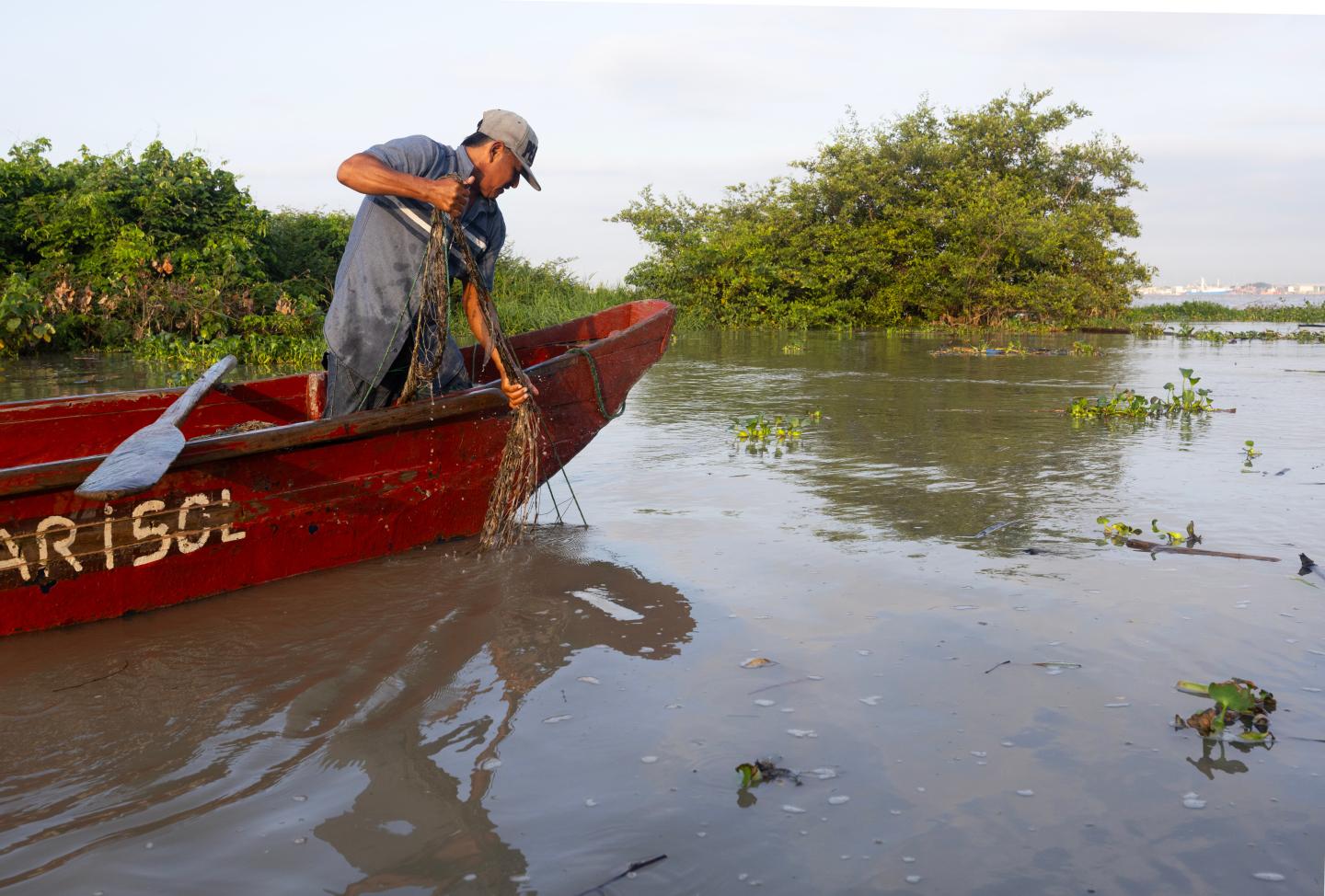
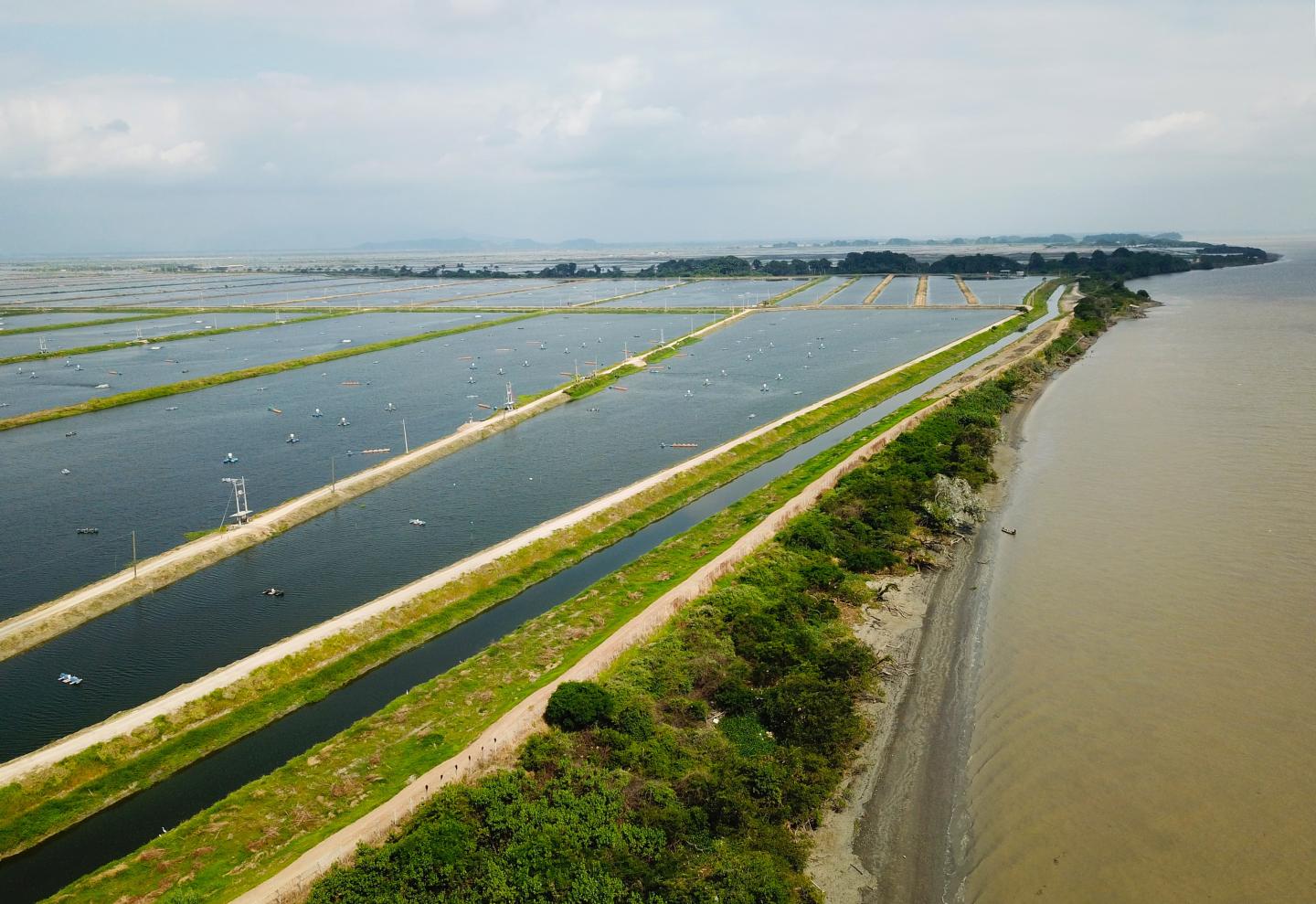
Artisanal fishers still work off the coast of Isla Santay even as shrimp aquaculture ponds are built along the Guayas River, encroaching on their fishing grounds.
Ecuador has already taken steps toward preserving and restoring its mangrove forests.
In 2008, the country became the first nation in the world to extend rights to nature, giving ecosystems the right to exist and thrive. And last year Ecuador’s National Chamber of Aquaculture signed an agreement to end mangrove conversion for shrimp farming.
In 1990, the country’s longstanding Mangrove Stewardship Use Agreement appointed custody of mangroves to traditional users of the forests, giving local communities responsibility for conservation and restoration.
Execution of the agreement hasn't been without challenges. But a new national project led by Universidad Espíritu Santo (UEES) and funded by the governments of Norway and Germany, offers fresh hope.
The project will restore 400 hectares (nearly 1,000 acres) of mangrove forest in the provinces of Esmeraldas, Manabí, Guayas and El Oro, which encompass both Isla Santay and the Arenillas Ecological Reserve.
When red crabs are not in season, Ordinola and Cruz help with the restoration project along with other crabbers. The work includes digging channels to divert water back to where it used to flow naturally before the construction of aquaculture ponds cut off the life-sustaining supply of water to the mangroves. The work provides another source of income, and their local expertise is crucial for restoring the ecosystem that once flourished.
“The communities in each restoration area are the heroes,” says Dr. Natalia Molina, research biologist from UEES who leads the institution’s mangrove restoration initiatives. “The crabbers know where the channels were before.”
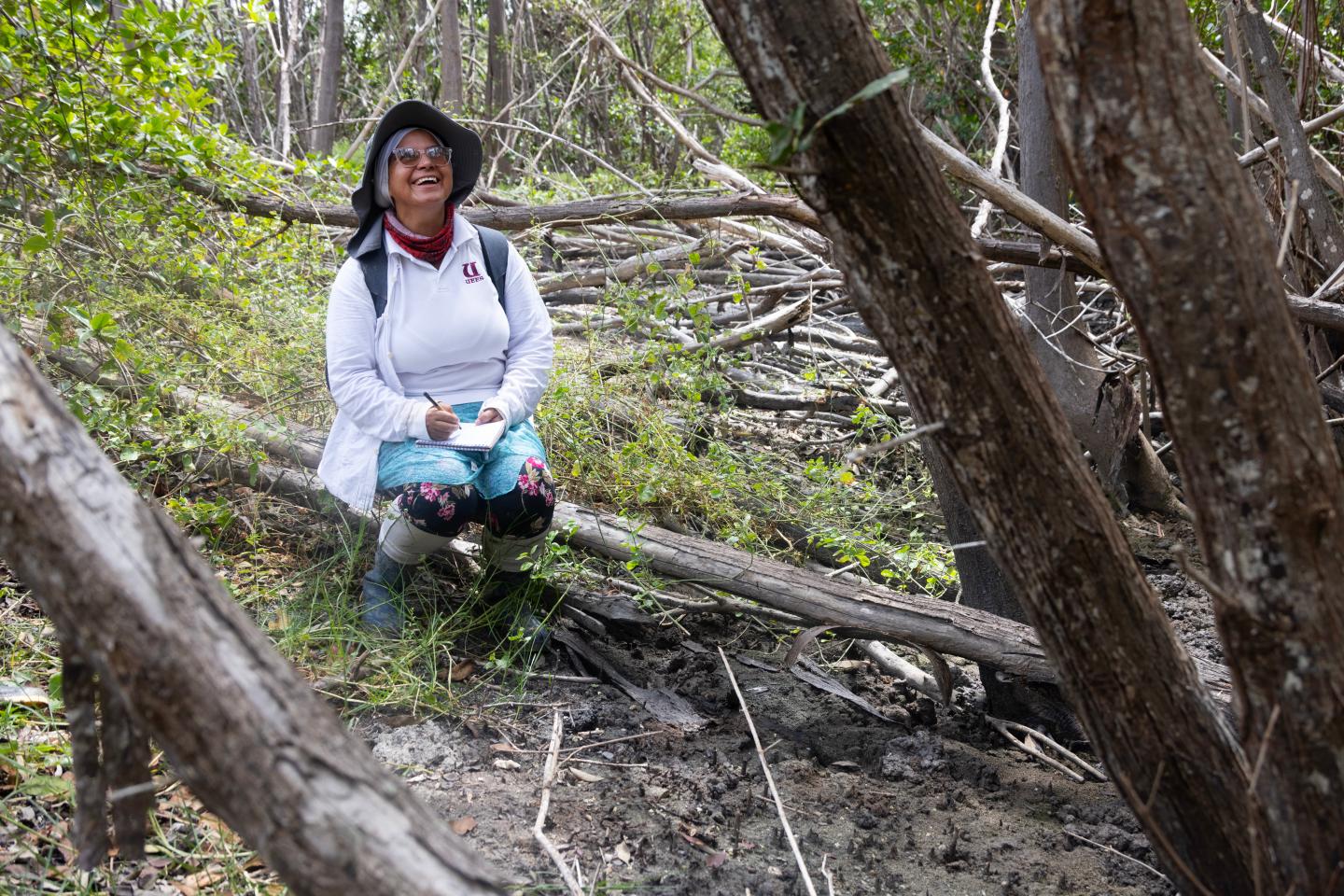
In Santay, the community is constructing nurseries and planting trees.
“Conservation of the mangrove depends on the care from the people who inhabit these areas,” says Dominguez, who is helping to organize the project. “As a community we take a lot of responsibility for it, and with our effort and dedication, I believe that we will be able to restore all the hectares that we have planned.”
A unique opportunity for study
The restoration projects offer scientists a unique opportunity to learn more about the mangroves' capacity to capture and store carbon in changing conditions. A team from UEES, Stanford University, Scripps Oceanographic Institution and EDF are tracking levels of carbon and methane before and after restoration in hopes of better understanding how the mangroves respond.
The research will also look at water quality and biodiversity to produce a full picture of the ecosystem’s health.
“By returning tidal activity to the sites or replanting of vegetation, the carbon sequestration potential of these ecosystems may return,” explains Julie Shahan, a PhD student from Stanford’s Doerr School of Sustainability. “This can help to determine where to target future restoration projects.”
Decades of expertise
Back at Arenillas Ecological Reserve, Ordinola and Cruz move swiftly through the mangroves. Carefully stepping on roots so as not to sink into the mud, they prod crab holes with metal hooks. When a promising borrow is found, the crabbers lie face down and extend an arm deep into the mud where a red crab lies dormant.
Decades of crabbing has given them the skill to estimate the crab’s size solely by touch. If the shell isn’t big enough, the crab is left alone. Juvenile crabs must be left to breed so the population sustains into the future.
It’s late in the season, but even so, they aren’t finding many full-size crabs. The expansion of aquaculture ponds is disturbing the ecosystem and affecting the crabs’ ability to molt and grow.
“As they damage the upper part of the land, the crabs must look for another place to molt,” explains Ordinola. “We are seeing that the crab is rising to the surface when it should be inside its burrow with food ready to do the shell molting process.”
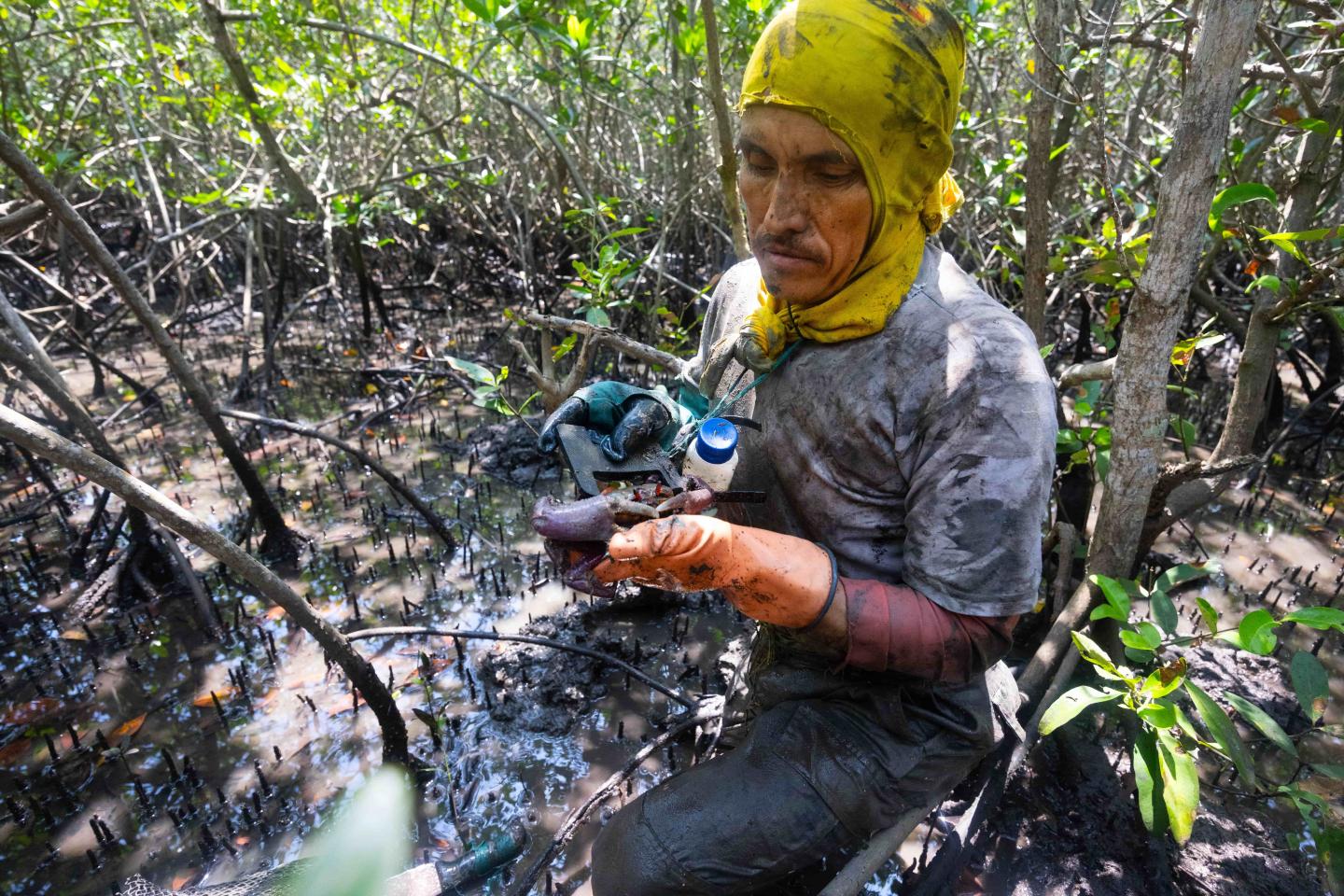
As the tide begins to rise, they hike out to the edge of the mangroves where forest gives way to mud flats. When the crab season is over, they will turn their attention to digging a new channel here, re-connecting the Gulf of Guayaquil to the mangroves and bringing critical water supplies to revive the crabs’ habitat.
“What exists between the mangroves and the community is a perfect symbiosis where the community depends on the mangrove, and the mangrove depends on the community,” says Dr. Molina. “Because the community is the only one that can protect the mangrove.”
